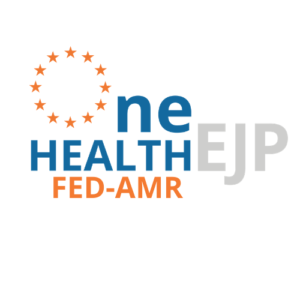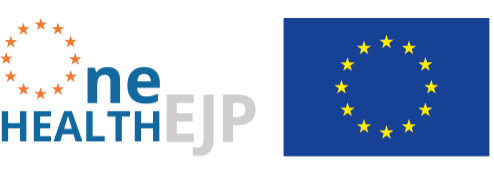Rua Rio Ave 1600, Carnide, Área Metropolitana de Lisboa, Portugal
University Road, Galway City, Connacht, Ireland
Südufer 10, Greifswald, Mecklenburg-Vorpommern, Germany
25 Rue du Docteur Roux, Paris 15e Arrondissement, Île-de-France, France
Max-Dohrn-Straße 8, Berlin, Berlin, Germany
Artillerivej 5, Copenhagen, Region Hovedstaden, Denmark
Ullevålsveien 68, Oslo, Oslo, Norway
Šrobárova 2551, Prague, Praha, Czech Republic
Spargelfeldstraße, Süßenbrunn, Wien, Austria

The Project #FED-AMR
| Start: | 1 January 2020 |
| Duration: | 2.5 Years |
| Domain: | Antimicrobial Resistance |
| Keywords: | Bacterial transformation, free extracellular DNA, antimicrobial resistance, horizontal gene transfer, ecosystem boundaries |
| Contact: | Werner Ruppitsch (AGES) |
FED-AMR: The role of free extracellular DNA in dissemination of antimicrobial resistance over ecosystem boundaries along the food/feed chain
Antimicrobial resistance (AMR) is a global threat to the environment and a public health issue. Risk evaluation of pathogens, antimicrobial resistance genes (ARGs), as well as mobile genetic elements (MGEs) in diverse environments and matrixes are mainly based on total DNA (tDNA) data. The role of the extracellular free DNA (exDNA) is still neglected in most environmental studies.
Overall, the FED-AMR project contributed:
- To improve the methods and knowledge in environmental exDNA research and its role in AMR transmission.
- To collect and analyse large amounts of data and metadata from an agricultural environment, which outcomes have been presented to stakeholders.
- To underline the importance of the role of exDNA as a source of diverse antimicrobial resistances in the environment, through the results of the FED-AMR project, which, in combination with the extremely long persistence and its important role as a structural component of biofilms, might represent a serious future public health threat that is currently neglected.
- To still perform data analysis with the metadata produced and to combine all data i.e. exDNA, tDNA, pesticides, antibiotics, heavy metals, microbiomes, as well as to identify clinically relevant bacterial species, which may help to elucidate the transfer and development of resistances in microbial communities in an agricultural environment.
- To have identified new potential sources of emerging resistant microorganisms along the feed/food chain with a focus on the environment and wildlife as a typically neglected component of One Health.
- To confirm that C. difficile can spread clonally across the different compartments (animal and environment); the compartments soil and wastewater showed greater diversity in terms of C. difficile ribotypes, while faecal and manure samples indicating the dominant strain; this suggests a unidirectional spreading out of the animal compartments into the environment, while the soil and wastewater compartments seem to act as a reservoir for different input pathways beyond the animal compartments. Of particular interest is the possibility that C. difficile is transferred back to animal compartments via groundwater and surface water. The introduction of antibiotics or other substances that promote the development of antimicrobial resistance in C. difficile into any of the compartments can have an impact on the other compartments.
- To demonstrate the genetic overlap between human and non-human C. difficile lineages at different One Health settings, supporting the high zoonotic importance of this human pathogen.
- To develop new ongoing projects such as HERA NGS II, funded by the EU Commission, which will incorporate and strengthen the knowledge acquired in this project.
- To understand the need to further improve any new method and new technologies, dynamically, despite the promising results we may have, as in the case of the FED-AMR.; therefore, with FED-AMR further research is essential before implementation into regional/ national surveillance systems.
- To a private company working on machine learning for detection of AMR from WGS data and a university institute working with exDNA, with whom a collaboration was established and further scientific exchanges in regards exDNA can occur in the future.
- To networking and communication between partners and reference laboratories from different backgrounds, sectors and countries, leading to new knowledge (such as at the level of the design of new protocols, or the implementation of new pipelines, or still for analysing data in the interface of genomics and informatics).
Project Outputs, Outcomes and Impact
FED-AMR project has implemented laboratory protocols related to the collection and genetic and phenotypic characterisation of clinically-relevant bacteria present in different environmental compartments. These were identified by the WHO for their relevance in terms of their resistance to last line antibiotics.
The HOALs, which correspond to real experimental open-air laboratories, will be regarded as an important model for in-depth studies that intend to continue to evaluate the spread of AMR.
FED-AMR project has developed important strategies for 16S and AMR metagenomic analysis, which are being disseminated to the scientific community through scientific publications.
FED-AMR project has also highlighted the harmonization and dissemination of protocols for C. difficile collection and isolation in animal, food and environmental samples, and the development of a pipeline for identification of MGEs in C. difficile (ClosTyper). All these tools are already in use by the partners and were or will be disseminated externally through scientific publications.
Selection pressures (antimicrobials, elements and herbicides) for antimicrobial resistance in environmental ecosystems (soil, water, faeces, manure, plants, feeds) were determined. Most of the samples showed low or usual concentrations of the analysed substances, but in some samples (soil, faeces and manure) antibiotics from two antimicrobial classes (fluoroquinolones and tetracyclines) were detected at or above the minimum selective concentrations for bacteria. The results will be used for an impact evaluation of antimicrobials, elements and herbicides on the prevalence and quantities of ARGs encoded on extracellular DNA in the tested environmental compartments.
Additionally to the eight published manuscripts, the Code developed by WP6 will be available in GitHub and all the FASTQ files from the 16S sequencing and the ARG profiling will be available on ENA once the results are published. Due to the limited amount of studies on gene capture for AMR, our project provides valuable datasets that can be used by other researchers interested in using similar methodologies for deep characterisation of AMR gene diversity.
The scientific impact of FED-AMR:
- By a study capitalised on advancements in high-throughput sequencing methods and analytical tools, as it provides the large scalability necessary to investigate bacterial communities, in a way to explore and mapping AMR in exDNA, either in human, animal, and environmental settings, and in several sample matrices.
- By sampling campaigns that provided basic information for establishing ARG monitoring in environmental compartments, which is recommended by EFSA and has the potential to become compulsory for EU MS.
- By using the true concept of One Health, namely with an important environmental component (farmers, pigs, wild animals, manure, air of pig barns, feeds, crops, soil, water).
The societal, policy-making and economic impact of FED-AMR:
- Impactful research that adds value to a European, national and international level.
- Decisive for assessing the potential of exDNA to serve as a high-risk source of resistance determinants in agricultural soils and along the food/feed chain.
- Impact on strategies to improve and/or upgrade wastewater treatment plants, as it is decisive for WWTP engineers to know if they have to design devices that only kill bacteria or if strategies to eliminate bacterial DNA from the waste streams would have to be applied.
- As reliable and accurate surveillance is fundamental to characterize the risk of AMR in a given region, the results obtained show how essential it is to track the spread of specific ARGs geographically and over time, identify new ARGs and support preventive measures and interventions against AMR pathogens.
- Through a systematic evidence map, we will gather and collate data to inform future research, policy-relevant systematic review questions, and future funding strategies, concerning risk mitigation for antibiotic resistance emerging in the environment. As such, we expect that the evidence map will be relevant to e.g. WHO, ECDC and other EU agency, and national public health agencies. We expect that the evidence will contribute to the current debate about the role of environmental fluctuations always occurring in nature on the emergence and dynamics of antimicrobial resistance.
Project Assets
Dost, I., Abdel-Glil, M., Schmoock, G., Menge, C., Berens, C., González-Santamarina, B., Wiegand, E., Neubauer, H., Schwarz, S., Seyboldt, C. (2023). Clostridioides difficile in South American Camelids in Germany: First Insights into Molecular and Genetic Characteristics and Antimicrobial Resistance. Antibiotics. 12(1), 86. DOI: https://doi.org/10.3390/antibiotics12010086
Alves, F., Castro, R., Pinto, M., Nunes, A., Pomba, C., Oliveira, M., Silveira, L., Gomes, J. P., Oleastro, M. (2023). Molecular epidemiology of Clostridioides difficile in companion animals: Genetic overlap with human strains and public health concerns. Frontiers in Public Health. 10, 1070258. DOI: https://doi.org/10.3389/fpubh.2022.1070258
Gardner, B., Betson, M., Cabal Rosel, A., Caniça, M., Chambers, M. A., Contadini, F. M., Gonzalez Villeta, L. C., M. M., La Ragione, R. M., de Menezes, A., Messina, D., Nichols, G., Olivença, D. V., Phalkey, R., Prada, J. M., Ruppitsch, W., Santorelli, L. A., Selemetas, N., Tharmakulasingam, M., van Vliet, A. H. M., Woegerbauer, M., Deza-Cruz, I., Lo Iacono, G. (2023). Mapping the evidence of the effects of environmental factors on the prevalence of antibiotic resistance in the non-built environment: Protocol for a systematic evidence map. Environment International. 171, 107707. DOI: https://doi.org/10.1016/j.envint.2022.107707
Gardner, B., Betson, M., Cabal Rosel, A., Caniça, M., Chambers, M., Contadini, F. M., Gonzales Villeta, L. C. Hassan, M. M., La Ragione, R., De Menezes, A., Messina, D. Nichols, G., Olivenca, D. V., Phalkey, R., Prada, J. M., Ruppitsch, W., Santorelli, L. A., Selemetas, N., Tharmakulasingam, M., van Vliet, A. H. M., Wögerbauer, M., Deza-Cruz, I., Lo Iacono, G. (2022) Factors associated with the prevalence of antibiotic resistance in the environment from a One Health perspective: Protocol for a systematic evidence map. Center for Open Science. DOI: https://doi.org/10.17605/OSF.IO/A8GV6
Alves, F., Cano, M., Brondani, G., Nunes, A., & Oleastro, M. (2022). Airborne spores’ dissemination of a swine associated Clostridioides difficile clone. Anaerobe. 78, 102651. DOI: https://doi.org/10.1016/j.anaerobe.2022.102651
Alves, F., Nunes, A., Castro, R., Sequeira, A., Moreira, O., Matias, R., Rodrigues, J. C., Silveira, L., Gomes, J. P., & Oleastro, M. (2022). Assessment of the Transmission Dynamics of Clostridioides difficile in a Farm Environment Reveals the Presence of a New Toxigenic Strain Connected to Swine Production. Frontiers in Microbiology. 13, 858310. DOI: https://doi.org/10.3389/fmicb.2022.858310
Cabal, A., Rab, G., Daza-Prieto, B., Stöger, A., Peischl, N., Chakeri, A., Mo, S.S., Bock, H., Fuchs, K., Sucher, J., Rathammer, K,, Hasenberger. P,, Stadtbauer. S,, Caniça. M,, Strauß. P,, Allerberger. F,, Wögerbauer. M,, Ruppitsch. W. (2022). Characterizing Antimicrobial Resistance in Clinically Relevant Bacteria Isolated at the Human/Animal/Environment Interface Using Whole-Genome Sequencing in Austria. International Journal of Molecular Sciences. 23(19), 11276. DOI: https://doi.org/10.3390/ijms231911276
Gardner, B., Hassan, M. M., Chambers, M., La Ragione, R. M., & Lo Iancono, G. (2022). Modelling the dynamics and long-term stability of perturbed gut microbiota. Poster presentation at ONE Conference 2022, Brussels, Belgium. 21-24 June 2022. DOI: https://doi.org/10.5281/zenodo.6860460
Cabal Rosel, A., Peischl, N., Daza, B., Stöger, A., Rab, G., Rathammer, K., Allerberger, F., Wögerbauer, M., & Ruppitsch, W. (2022). Antimicrobial resistance and genetic relatedness among Escherichia coli isolates across the animal-human-wildlife interface in Austria. Poster presentation at 32nd European Congress of Clinical Microbiology and Infectious Diseases, Lisbon, Portugal. 23-26 April 2022. DOI: https://doi.org/10.5281/zenodo.6641985
Kořínková M, Štěpánková M, Drahošová Z, Matoušková N, Matějů L, Hochmalová K, Zimová M. (2021). International project to map the potential for horizontal transfer of antibiotic resistance genes across different ecosystems. Project presentation by SZU during an Ekomonitor seminar on Waste Analytics. DOI: https://doi.org/10.5281/zenodo.5770032
Cabal A, Peischl N, Rab G, Stöger A, Springer B, Sucher J, Allerberger F, Ruppitsch W. (2021). Draft genome sequence of a multidrug-resistant Escherichia coli sequence type 1193 pandemic clone isolated from wastewater in Austria. Microbiol Resource Announcements 10:e00762-21. DOI: https://doi.org/10.1128/MRA.00762-21.



